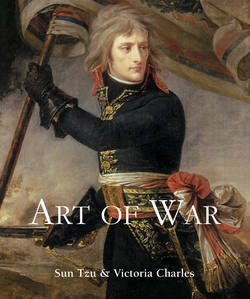Читать книгу Art of War - Sun-tzu - Страница 5
На сайте Литреса книга снята с продажи.
Introduction
The Artists of War
Оглавление“We were specialists in camouflage, but at that time were fighting for our lives as ordinary infantry. The unit was composed of artists, since it was the theory of someone in the Army that we would be especially good at camouflage.”
(Kurt Vonnegut, Bluebeard)
For centuries, battles were just one of the many motives the multi-faceted artist chose to depict. His motivation was usually of a purely aesthetic nature or on occasion, financial when he was commissioned to create such a painting. This started to change around the time of the American Revolution, when artists such as John Trumbull or Emanuel Leutze (painter of the famous Washington Crossing the Delaware; situated in The Metropolitan Museum of Art in New York), started to focus more on or even specialise in war-related art. This is not surprising, since this development can be retraced in the world of art in general. While there have always been outstanding artists that worked in multiple fields and never settled on one subject, a certain trend started to evolve roughly after the Renaissance. Artists chose one thematic field which they adhered to for the majority of their creative life. In war-related art this development continued as such. Apart from the “civilian” artists that chose to make the wars of their country the subject of their art, even governments started to appoint official war artists, who partly served in the army themselves, and commissioned them to document conflicts. From there it was only a short step to armies developing specific art programmes and the “embedded artist” – an artist-soldier, whose impressions of war and conflict were at the same time absolutely subjective but also unadulterated. In the same way, the function of the war photographer rose to prominence. It is in this context that the term “documentary” can truly be applied to war-related art. Not that the impressions captured by war artists and photographers are beyond bias or distortion, but even if they just chronicle one person’s subjective war experience, they already transcend centuries of war paintings in terms of realistic, documentary quality. However, this truthfulness heralded at the same time the end of war art in its then current form. Artists who fought in World War I did not come back with impressions of noble warriors assaulting enemy positions, recklessly brave cavalry charges or cunning manoeuvres. Instead they showed the horror of losing friends to gas attacks or being crushed by tanks and the gruelling experience of trench warfare, being under constant artillery fire. In a way, this World War brought about the end of glorification of war in art.
